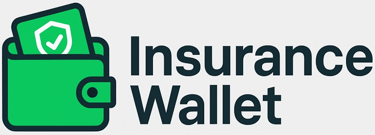✅ Characteristics of an Insurable Risk
🌟 Introduction
Insurance cannot cover every kind of uncertainty in life.
To be insurable, a risk must meet certain conditions — otherwise the system becomes unfair, unmanageable, or prone to misuse.
Think of it like a checklist insurers use to decide whether a risk is practical, measurable, and fair to insure.
Let’s understand these characteristics in plain language 👇
🧠 1. The Loss Must Be Accidental and Uncertain
Insurance is meant for unexpected events, not planned ones.
There must be genuine uncertainty about whether the loss will happen.
✅ Simple example
A sudden car accident — insurable.
A planned damage to claim money — not insurable.
If the event is certain or intentional, it cannot be insured.
🎯 2. The Loss Must Be Definite and Measurable
The loss should be clear to identify and possible to measure in money terms.
Insurers need clarity on:
What happened
When it happened
How much the financial loss is
✅ Example
Fire destroys stock in a shop — value can be measured.
Emotional sadness or mental stress?
Cannot be measured in money → not insurable.
🧾 3. The Risk Should Be Homogeneous
There must be many similar risks for insurers to compare and predict losses accurately.
This allows the Law of Large Numbers to work —
without similarity, insurers cannot price policies properly.
✅ Example
Thousands of similar cars → predictable accident rates
A one-of-a-kind antique → unpredictable, harder to insure
💰 4. The Loss Must Be Financially Significant
Insurance is meant to protect from meaningful financial impact, not trivial inconvenience.
✅ Example
A house fire = large financial loss
A broken pen = too small to insure
Insurance exists to protect from financially painful events.
📊 5. The Probability of Loss Must Be Calculable
Insurers must be able to estimate how often a loss may happen and how much it might cost.
This requires historical data or reliable statistics.
✅ Example
Health, life, motor, fire risks → have solid data
Lottery loss or business failure → unpredictable, cannot be priced fairly
💼 6. The Loss Must Not Be Catastrophic to the Insurer
Insurers can handle many small and medium losses, not events that wipe out everyone at once.
Events like war, nuclear events, and sometimes pandemics are excluded because they can bankrupt entire insurance systems.
✅ Example
One factory fire → manageable
Entire country destroyed by war → catastrophic
🤝 7. The Insured Must Have Insurable Interest
The person buying insurance must benefit from protection and suffer genuine loss if damage happens.
✅ Example
You can insure your own house, not your neighbour’s.
🧠 Short Way to Remember
An insurable risk must be:
Uncertain, accidental
Measurable
Significant
Predictable
Homogeneous
Non-catastrophic
Backed by insurable interest
If a risk meets these — insurers can cover it fairly and sustainably.
🎓 Why Advisors Must Know This
When you understand this concept, you can:
✅ Explain why some things are insurable and some are not
✅ Answer client questions confidently
✅ Avoid false promises or incorrect commitments
✅ Build professional credibility and trust
💬 Advisor Script
“Insurance protects against unexpected financial losses that can be measured and managed. Not every uncertainty qualifies — only risks that fit insurance principles.”
✅ Conclusion
Insurable risks follow a clear logic:
They must be real, measurable, fair, and manageable.
This keeps insurance stable, ethical, and affordable for everyone.
